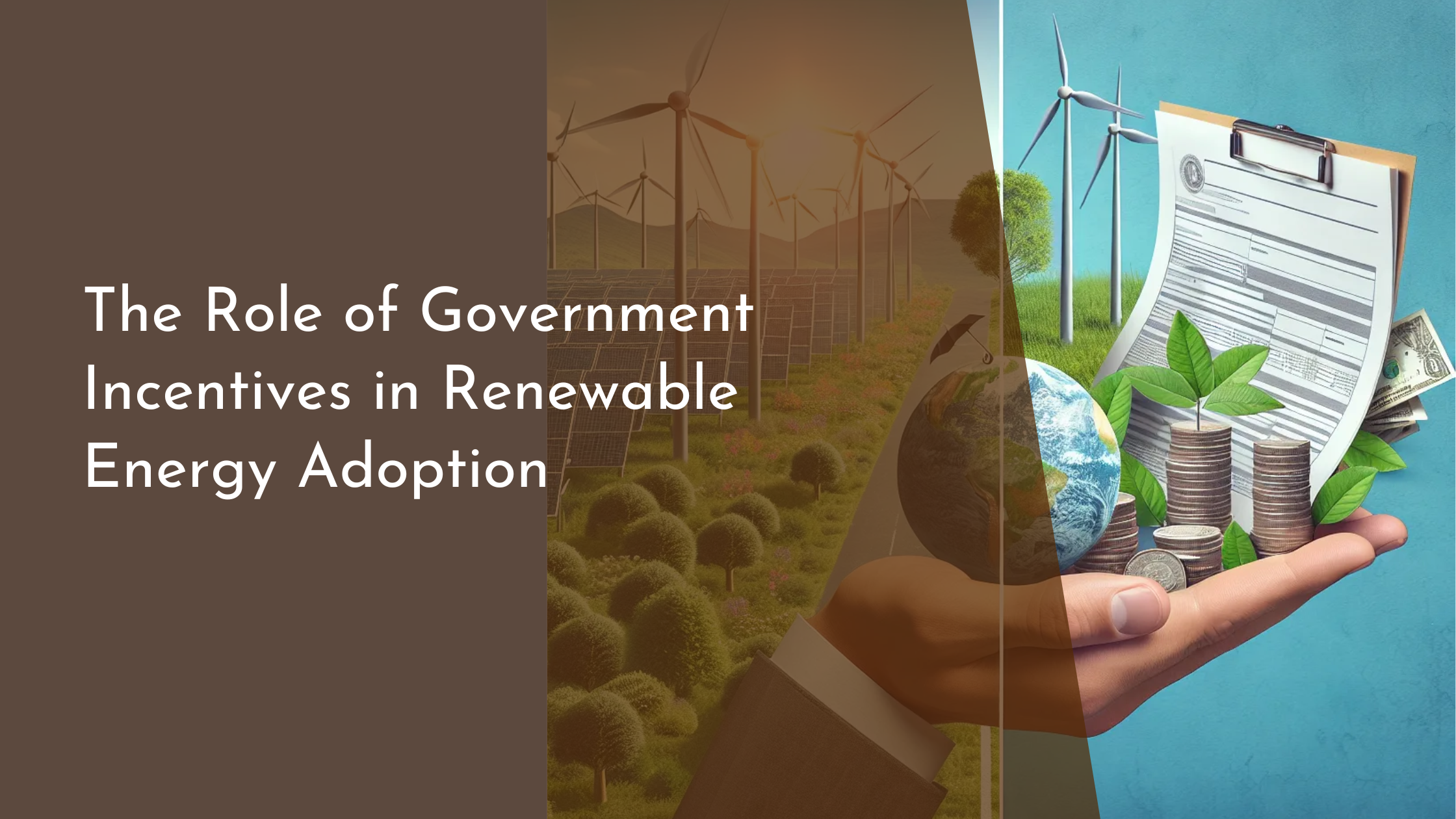The Role of Government Incentives in Renewable Energy Adoption
The transition to renewable energy is a vital component of addressing climate change and ensuring a sustainable future. Governments around the world are playing a crucial role in this shift by implementing various incentives designed to promote the adoption of renewable energy technologies. These incentives not only help reduce the cost barriers associated with renewable energy projects but also encourage innovation and investment in the sector. In this article, we will explore the different types of government incentives, examine key incentives driving renewable energy growth, look into successful case studies, and discuss the future role of governments in the renewable energy landscape.
Understanding Government Incentives in Energy
Government incentives in the energy sector are designed to encourage the development and adoption of cleaner energy sources by providing financial or policy-based benefits. These incentives often come in the form of tax credits, grants, rebates, or subsidies, aimed at reducing the upfront costs for businesses and homeowners investing in renewable energy technologies. By lowering financial barriers, these incentives make it more feasible for individuals and companies to participate in the transition to sustainable energy sources.
In addition to financial incentives, governments also implement regulatory measures that support renewable energy growth. These measures can include renewable energy mandates that require a certain percentage of energy to come from renewable sources, as well as feed-in tariffs that guarantee a fixed price for electricity generated from renewables. By combining financial and regulatory incentives, governments create an environment that fosters the development and integration of renewable energy technologies into the existing energy landscape.
Key Incentives Driving Renewable Energy Growth
Tax incentives are one of the most effective tools used by governments to drive renewable energy growth. Programs such as the Investment Tax Credit (ITC) and the Production Tax Credit (PTC) in the United States have significantly reduced the cost of solar and wind energy projects. The ITC allows businesses and homeowners to deduct a percentage of their solar investment from their federal taxes, while the PTC provides financial support to facilities generating electricity from renewable sources. These tax benefits encourage investment in renewables by improving the financial returns of such projects.
Grants and rebate programs provide direct financial support to individuals and businesses for installing renewable energy systems. These programs often target specific technologies, such as solar panels or wind turbines, and can cover a significant portion of the installation costs. By reducing the initial investment required, grants and rebates make it easier for more people to choose renewable energy solutions. Additionally, these programs often stimulate local economies by creating jobs in the installation and manufacturing sectors of renewable technologies.
Case Studies: Success Stories in Renewable Energy
Germany serves as an exemplary model of how government incentives can lead to renewable energy success. Through the implementation of the Renewable Energy Sources Act (EEG), Germany introduced feed-in tariffs that ensured fixed payments for renewable energy producers. This policy significantly boosted the deployment of wind and solar power, making Germany a global leader in renewable energy production. The country’s commitment to such incentives helped it achieve a remarkable increase in the share of renewables in its energy mix, demonstrating the effectiveness of well-crafted government support.
Another compelling case is Denmark, which has successfully harnessed wind energy as a cornerstone of its renewable strategy. Through a combination of policy measures, including tax incentives and government support for research and development, Denmark has become a pioneer in wind technology. The country’s energy policies have encouraged investments in both onshore and offshore wind farms, leading to a substantial reduction in greenhouse gas emissions and positioning Denmark as a leader in wind energy technology and implementation.
The Future of Renewables: Government’s Role
As the world continues to recognize the urgent need for sustainable energy solutions, governments will play an even more crucial role in the future of renewables. Policymakers must continue to innovate and expand incentives to address emerging challenges and technologies. This includes investing in modernizing the electrical grid, supporting the integration of storage technologies, and promoting the development of new renewable sources such as hydrogen. By staying ahead of technological advancements, governments can ensure a smooth transition to a low-carbon energy system.
Furthermore, international cooperation will be essential to align incentives and policies across borders. As climate change is a global challenge, countries must collaborate to share best practices, technologies, and resources. Multilateral agreements and global incentives can drive the adoption of renewable energy on a larger scale, accelerating the global transition to sustainable energy sources. By working together, governments can create a more resilient and sustainable energy future for all.
The role of government incentives in renewable energy adoption is pivotal to overcoming barriers and accelerating the transition to a sustainable energy future. Through financial support and smart policy design, governments can drive significant advancements in renewable energy technologies and their integration into the global energy system. With continued innovation, cooperation, and commitment, government incentives will remain at the forefront of efforts to combat climate change and promote a cleaner, more sustainable world for future generations.

